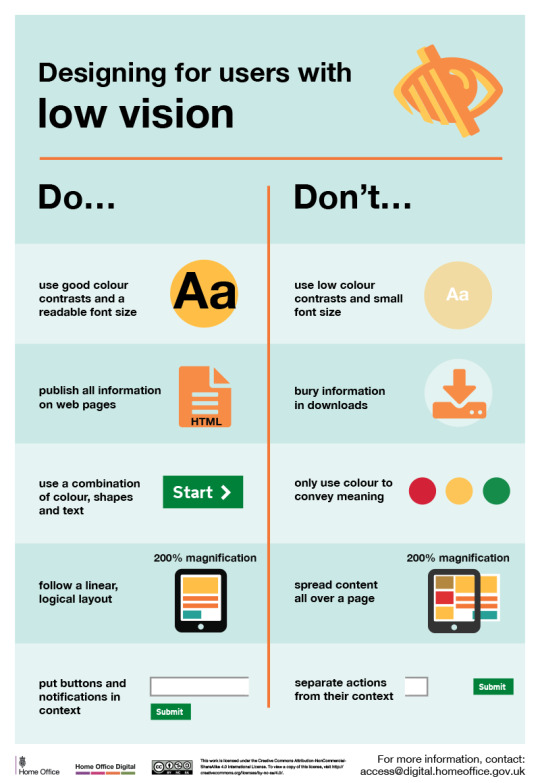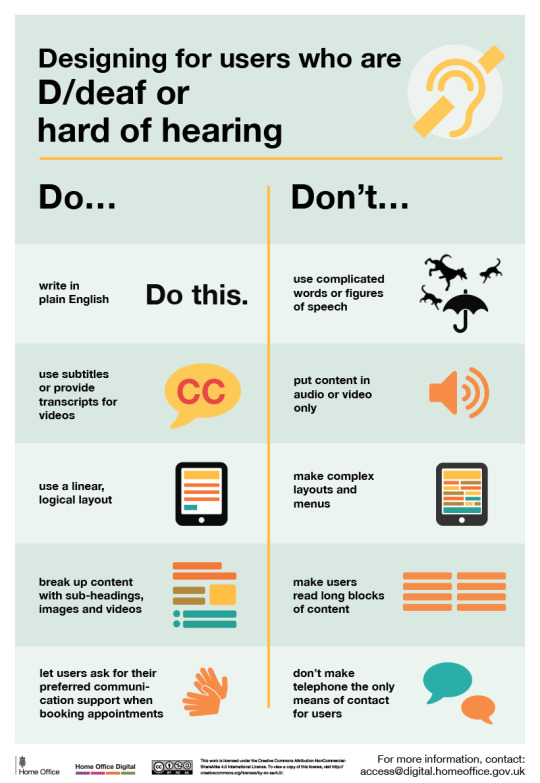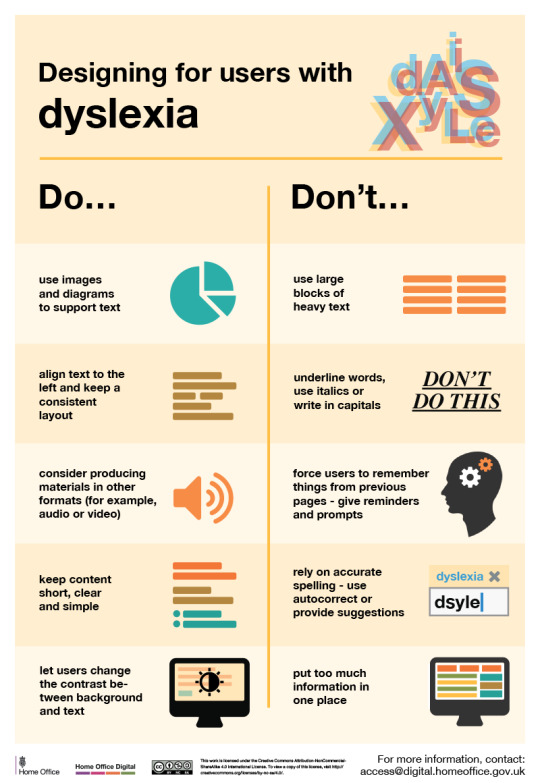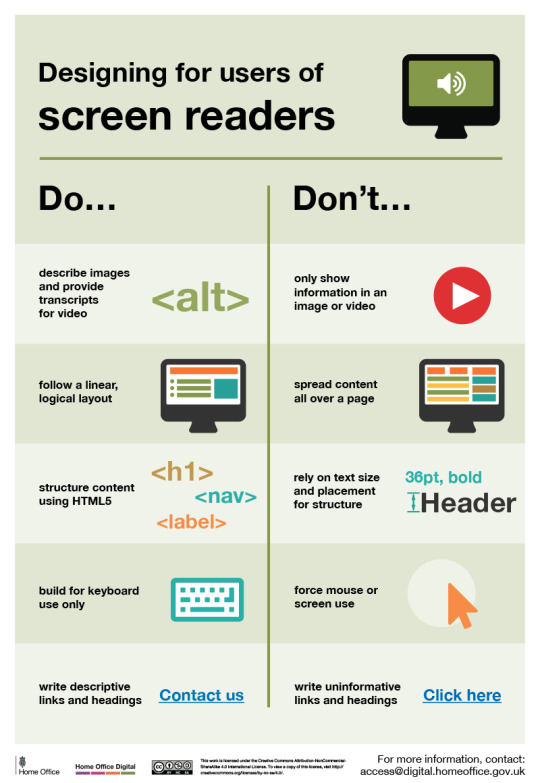a blog space to share things i've been learning along the way and an oppertunity to doccument uni specifics & more. (Graphics by Oriana-Marie)
Don't wanna be here? Send us removal request.
Text
Connect the dots task
From the list provided: choose two subjects and make an unlikely but positive connection
I choose ‘Kanye west and William Shakespeare’:
Both are writers who are able to communicate to a vast number of people/an audience. wise with their word and communicate emotion whether its through every song or every sonnet. This makes the community feel as if they can relate to them.
---------------------
if they were combined for modern day what could they produce?
* Kanye uses a lot of beige, make a Wiliam Shakespeare outfit
* New way of performance over a Kanye beat (new form of poetry)
0 notes
Text
10 things you can make out of a clothes hanger
Task set by uni. Someone designed that... even though its so everyday. Don’t dismiss it & don’t take it for granted
1. hang the clothes
2. make a sword / fighting tool
3. join them make a clothes line
4. make a fish / fish catcher
5. belt
6. wire rings
7. cute flower
8. back scratcher
9. wire toy car
10. mickey mouse ears
--------------------------------------------------------
additional
----------------------------------------------------------
11. pick a lock
12. picture hanger
13. earrings for a giant
14. use it to turn off the smoke alarm
15. plant support
16. de-clog a drain
17. a social distance poker
18. shape cutter
19. add magnet, metal detector
20. use it for smores.
0 notes
Text
language learning
Nevertheless, we should think about language learning as the process your brain goes through, during immersion, that leads to fluency.
So, what does full immersion really do for your brain? Well It creates urgency, gives you exposure to real interactions and common vocabulary, confronts you with common expressions, engages all your senses, and above all, is consistent. In list form, immersion:
Creates urgency – because—unless you want to be very impolite—you need to say something, even if it’s “je ne parle pas français”
Provides realistic interaction – because immersion is reality
Reveals common vocabulary – because most books are outdated and don’t include common talk like slang
Highlights expressions – because expressions are common, but not in academic study
Engages all of your senses – because you smell, taste, see, hear, and feel a conversation
Gives consistent exposure – because you have to speak throughout the day, every day
Because full immersion isn’t really possible (except for children in public school), the best methodology is to simulate it in the closest way possible by reading, writing, listening, and speaking (the 4 mediums of acquisition) in equal increments.
In many ways, language learning is like dieting. You can start off with ambitious goals and a set plan. After a bit of time, you start to falter from the plan for one reason or another. The good news is that, unlike dieting, you will never completely lose the things you previously studied. They go dormant, sure, but you can activate them again.
In other words, you need to be determined about reading, writing, listening, and speaking, and you need practice them in a way that creates urgency, simulates real situations, emphasizes common vocabulary, highlights expressions, engages all of your senses, and you need do so consistently.
If you’re dropped into the French countryside, first you will listen, then you will speak, then you will read, and finally you will write. In list form:
Listening
Speaking
Reading
Writing
This means that for every hour of study, you should devote 15 minutes to speaking, 15 to listening, 15 to reading, and 15 to writing.
https://thefrenchobjective.com/how-to-speak-french/
0 notes
Text
Habit fundamentals.
Small steps are successful. Start as small as you can, and increase only gradually as long as you stay consistent
For the sake of yourself... Don’t let yourself forget! Set up reminders. The thing that trips people up in the beginning is remembering to do the habit.
Find reward in the doing. You won’t stick to any change for long if you really hate doing it. Instead, find some pleasure in the doing of the habit.
Try to be as consistent as possible. The more consistent you are, the better. Resist putting off the habit, and make it your policy to just get started when you have said you’ll do it, rather than indulging in the old pattern of, “I’ll do it later.” That’s an old habit that you want to retrain by doing it immediately.
0 notes
Text
How to actually stick to your goals this year
-an extract from atomic habits-
Even if we get really inspired and start doing things better, it's tough to actually stick to new behaviors. It's more likely that this time next year you'll be doing the same thing than performing a new habit with ease.
In order to believe in a new identity, we have to prove it to ourselves.
The key to building lasting habits is focusing on creating a new identity first. Your current behaviors are simply a reflection of your current identity. What you do now is a mirror image of the type of person you believe that you are (either consciously or subconsciously).
To change your behavior for good, you need to start believing new things about yourself. You need to build identity-based habits.
Many people begin the process of changing their habits by focusing on what they want to achieve. This leads us to outcome-based habits. The alternative is to build identity-based habits. With this approach, we start by focusing on who we wish to become.
The Recipe for Sustained Success
Changing your beliefs isn’t nearly as hard as you might think. There are two steps.
1. Decide the type of person you want to be.
2. Prove it to yourself with small wins.
These are big questions, and many people aren’t sure where to begin—but they do know what kind of results they want: to get six-pack abs or to feel less anxious or to double their salary. That’s fine; start there and work backward from the results you want to the type of person who could get those results. Ask yourself, “Who is the type of person that could get the outcome I want?”
In my experience, when you want to become better at something, proving your identity to yourself is far more important than getting amazing results. This is especially true at first.
If you want to get motivated and inspired, then feel free to watch a YouTube video, listen to your favorite song, and do P90X. But don't be surprised if you burn out after a week. You can't rely on being motivated. You have to become the type of person you want to be, and that starts with proving your new identity to yourself.
0 notes
Text
Your life today is essentially the sum of your habits. pt 2
- expert from atomic habits-
how to create a good habit.
1st law (cue) Make it obvious
2nd law (craving) Make it attractive
3rd law (response) Make it easy
4th law (reward) Make it satisfying
how to break a bad habit.
inversion of 1st law (cue) Make it visible
inversion of 2nd law (craving) Make it unattractive
inversion of 3rd law (response) Make it difficult
inversion of 4th law (reward) Make it unsatisfying
If you’ve ever wondered “why don’t I do what I say I’m going to do? why don’t I lose the weight or stop smoking or save for retirement or start the side business? why do I say something is important but never seem to make time for it?”. The answers to those questions can be found somewhere in these four laws. the
0 notes
Text
Your life today is essentially the sum of your habits. pt 1
-expert from atomic habits-
how in shape in or out of shape you are? a result of your habits.
how happy or unhappy you are? a result of your habits.
how successful or unsuccessful you are? a result of your habits.
what you repeatedly do for example what you spend your time thinking about and doing each day.... ultimately forms the person you are, the things you believe, and the personality that you portray.
How habits work
the process of building a habit can be divided into four simple steps : cue, craving, response and reward. Your brain runs through these steps in the same order each time.
Cue - triggers your brain to initiate a behaviour. it is a bit of information that predicts a reward. Today we spend most of our time learning cues that predict secondary rewards like money and fame, power and status, praise and approval, love and friendship, or a sense of personal satisfaction. (of course, these pursuits also indirectly improve our odds of survival and reproduction, which is the deeper motive behind everything we do. Your mind is continuously analysing your internal and external environment for hints of where rewards are’re located.) because the cue is the first indication that we’re close to a reward, it naturally leads to a craving.
Cravings - cravings are the second step of the habit loop... the motivational force ehind every habit. without some level of motivation or desire/ without craving a change we have no reason to act. every craving is linked to a desire to change your internal state.
The Response - whether a response occurs depends on how motivated your are and how much friction is associated with the behaviour. If a particular action requires more physical or mental effort than you are willing to expend, then you wont do it. Your response also depends on your ability. It sounds simple, but a habit can occur only if you are capable of doing it.
Reward - The end goal of a habit. the cue is about noticing the reward and the response is about obtaining the reward. we chase rewards because they serve us two purposes 1.they satisfy us and 2.they teach us. rewards satisfy your cravings... at least for a moment, rewards deliver contentment and relief from craving. reward also teach us which actions are worth remembering in the future. Your brain is a reward detector. The sensory nervous system is continuously monitoring which actions satisfy your desires and deliver pleasure. feelings of pleasure and disappointment are part of the feedback mechanism that helps your brain distinguish useful actions from useless ones. rewards close the feedback loop and complete the habit cycle.
If a behaviour is insufficient in any of the four stages, it will not become a habit. the entire process is completed in a split second and we use it again and again without realising everything that has been packed into the previous moment.
#habit#atomichabits#book#reading#breakinghabits#forminghabits#understandingbehvaiour#behaviourchange
1 note
·
View note
Text
How habits work
(The everyday app) - from the appendix to ‘power of habit’
it’s not that the formulas don’t exist. The problem is that there isn’t one formula for changing habits. there are thousands.
Individuals ands habits are all different so changing the patterns in our lives differ from person to person and behaviour to behaviour. What’s more, each person’s habits are driven by different cravings. Change might not be fast and it isn’t always easy. but with time and effort, almost any habit can be reshaped.
The framework
a simple neurological loop for habits
- A cue, A routine and a reward.
To understand your own habits you need to identify the components of your loops, once you have diagnosed the habit loop of a particular behaviour, you can look for ways to supplant old vices with new routines.
1. identify the routine, what’s this place or thing you do within your routine that sparks the start of this.
2. what’s the cue for the 7routine? is it hunger? boredom? low blood sugar? that you need a break before plunging into another task? to identify a cue amid the noise, we can use the same system as the psychologist: identify categories of behaviours ahead of time to scrutinize in order to see patterns. ( almost all habitual cues fit into one of five categories: -location, -time, -emotional state, -other people7, -immediately preceding action.) so, if you’re trying to figure out the cue for ‘going to the cafeteria and buying chocolate chip cookie’ habit. write down 5 things the moment the urge hits you. (where are you?, what time is it? who else is around? what action precedes the urge?) followed by the next day and the day after that.
3. what’s the reward? the cookie itself? the change of scenery? The temporary distraction? socialising with colleagues? or the burst of energy that comes from the blast of sugar? testing out different rewards like 4 or 5 may show you patterns ro look out for. you will soon be able to isolate what you are actually craving, which is essential in re-desiging the habit.
To figure this out, you’ll need to do a little experimentation.
4. Have a plan, once you’ve figured out your habit loop. a habit is a choice that we deliberately make at some point and then stop thinking about, but continue doing often every day.
0 notes
Text
The everyday app
I downloaded the everyday app as a way to see if I could kick myself into jump starting habits that I want to continue long term. I’ve had a desire to introduce new things into my life such as wanting to learn a language yet this requires 1. having an initial starting point, -no matter how small and 2. being able to do it enough times (regularly) to make it become natural as part of your life.
Just like a baby learns to crawl, walk and talk sometimes it’s harder as an adult to be vulnerable to learning that same ‘slow’ but necessary process to get to the next destination without letting ‘adult’ excuses come in the way. However babies don’t think this hard when it comes to learning new things and their less complex way of thinking makes it so easy to get on with life (uno... without the thought of judgement or thinking that your being looked down upon because you made a mistake).
I tried the app, and don’t think that this specific app helps me personally, however it did have some really nice articles that I wanted to note before officially deleting the app. So notes soon to come...
xoxo
0 notes
Photo






Dos and don'ts on designing for accessibility
Karwai Pun, GOV.UK:
The dos and don’ts of designing for accessibility are general guidelines, best design practices for making services accessible in government. Currently, there are six different posters in the series that cater to users from these areas: low vision, D/deaf and hard of hearing, dyslexia, motor disabilities, users on the autistic spectrum and users of screen readers.
[…] Another aim of the posters is that they’re meant to be general guidance as opposed to being overly prescriptive. Using bright contrast was advised for some (such as those with low vision) although some users on the autistic spectrum would prefer differently. Where advice seems contradictory, it’s always worth testing your designs with users to find the right balance, making compromises that best suit the users’ needs.
[github]
89K notes
·
View notes
Text
Essay writing: Everything Is Hyper Connected in the Internet of Things
From some research for the essay this was one of the articles that I came across. https://www.wired.com/insights/2014/08/everything-hyper-connected-internet-things/
Titled : Everything Is Hyper Connected in the Internet of Things
it talks about many things bout how beneficial the hyperconnected world in terms of technology has been able to better our community, nationally and internationally too.
These particular points managed to grab my attention:
You are going to hospital for a hip operation. The chances are, very soon, your surgeon will be wearing a pair of Google Glasses (or something similar) and the replacement joint will have been 3D printed with embedded sensors. Everything conducted during surgery itself will be transmitted directly to your EHR (Electronic Health Records) in real-time via the wearable device(s) your surgeon has. The sensors in the printed hip joint are already recording your vital signs, again in real-time.
You leave the hospital, and are given a recovery plan together with another wearable device, much like a JawboneUP wristband. The sensors in your hip are now connected to the wristband which also monitors your movements, and that data is transmitted to your patient records with your local GP who can observe how your recovery is going in line with the recovery plan. Your wristband also ‘reminds’ you when it’s time to take your meds, and even via RFID/ Near Field Comms will warn you if you’re about to reach for the wrong bottle.
All that data is constantly fed to the GP who can alter your recovery plan in line with your progress, or even combine it with other patients who have been through a similar procedure and adjust automatically, in real-time, according to trends which may benefit you even more.
Your utilities company could be made aware of your situation, and via your patient wristband and interface to your smart home, adjust your electricity and gas plan in line with your limited mobility. No point having a smart home and a dumb utilities provider. Smart thermostats, smart lights, smart household appliances all can switch on and off and learn your patterns as you recover. Your wristband could switch off the TV for example if you take a snooze on the couch by monitoring your inactivity.
These points really emphasised the point of how advanced our technology is becoming and how this can increase the globes interconnectedness. Technology has the ability to strengthen people by improving communication, data handling and even more so becoming personalised to us each of us individually. This is the beauty of technology today and the ability of how it manages to keep people no matter how far or near to be together. (or at least feels together)
2 notes
·
View notes
Photo


The fundamentals of Graphic design
These are some sections within the books that particularly caught my attention
0 notes
Text




CREATING TYPOGRAPHY: PAPER PLAY
This task was about creating 3 Dimensional typography that communicates a message. I had decided to base my typography on dots (circles) which left empty sections within each letter and circle almost creating negative space.
The basis of this word is Polka dots, however solely focusing on “Polka” in which the dots comprised it of.
This process was done by initially cutting out each letter. Drawing circles that fit nicely next to each other and closing the circles on top of white paper placed beneath. Using a pen knife the empty spaces between each circle could be cut off. Once the circles were done, using the craft knife they were all cut around leaving the remaining sections to be bent to create a 3D type.
Originally I wanted to do the circles completely folded,360 all the way. However it was a very time consuming process so I stuck to just the sides being 3D and placed against a pink background. If I also had time I would of removed the masking tape and painted each circle to make each letter look clean and polished. I think no markings would have emphasised an illusion of each letter really being made out of circles. However for the time being I want to just demonstrate the idea and help visualise what the final outcome with look like. Also as the circle sizes vary, this altered how empty the sides looked. Each letters widths along the sides do not match so I think If I was to do this mathematically or created a digital version first it would have made everything equal.





1 note
·
View note











